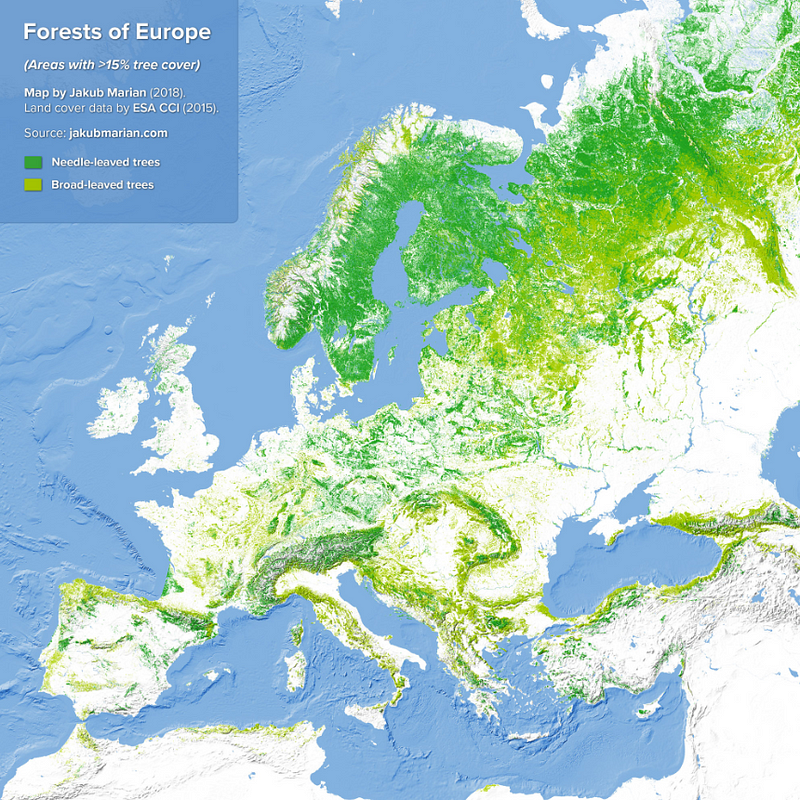The Complicated Coexistence of Wolves and Farmers in Europe
Written on
Chapter 1: The Resurgence of Wolves in Europe
The wolf population in Europe has seen a remarkable recovery. After reaching critically low numbers during World War II, estimates in the 1960s indicated fewer than 1,000 wolves remained. Fast forward to 2022, and a report revealed an astonishing increase of up to 1,800%, with approximately 17,000 wolves now inhabiting Europe across ten distinct populations.
Historically, wolves found refuge in the ancient forests of Eastern Europe. From these areas, they have gradually reclaimed territories throughout the Alpine mountain range and beyond. While conservationists celebrate this resurgence, livestock farmers face significant challenges. The question of how to coexist with these predators amid growing biodiversity concerns is increasingly pressing.
Recently, in Switzerland, the frustration of sheep farmers reached a boiling point when they placed the carcasses of dead sheep on the steps of a government building. Eric Herb, a representative from a farmers' group, expressed their outrage: “These were killed last night.” Patrick Perroud, a local farmer, voiced a common sentiment: “We are fed up with this. We demand the wolves be culled… Coexistence is impossible. Our territory is too limited.”
This anger is understandable, especially considering that wolves killed 1,480 livestock in Switzerland in 2022. The tension between anti-wolf and pro-wolf sentiments raises an essential question: Can coexistence with wolves be achieved, or is it merely an unrealistic aspiration?
Chapter 2: Managing Wolf-Livestock Interactions
Dr. Simon Harrison, a senior ecology lecturer at University College Cork, offers insight into potential solutions for cohabitation. “The only feasible way to have both wolves and sheep coexisting is through protective measures for the sheep, such as employing shepherds, large guard dogs, and electric fencing,” he explained.
This proactive strategy has been taken further in Switzerland, where volunteers have begun monitoring flocks using night vision equipment. If they spot a wolf, they create loud disturbances to scare it away. Jérémie Moulin, director of the Organization for the Protection of Alpine Pastures, noted, “Our goal is to ensure that by the end of the summer, both the livestock and the wolves remain unharmed.”
While this strategy can effectively minimize sheep losses, it isn't necessarily a sustainable long-term solution, particularly given the vast number of sheep in Switzerland.
Dr. Harrison suggests that wolves can coexist with humans in landscapes that provide ample broad-leaved woodland, allowing wolves to hunt away from human settlements. These areas would also support a healthy population of prey, such as wild boar and roe deer, creating an ecosystem where livestock predation is less likely.

Chapter 3: Understanding Wolf Diets and Behaviors
Wolves are opportunistic predators, adapting their diets based on availability. In stable environments, they tend to hunt wild animals or domestic livestock. Unfortunately, sheep, being smaller and more defenseless, often become easy targets.
“Sheep are particularly vulnerable; they lack the means to escape quickly and are typically found in open fields, making them easier for wolves to hunt,” Dr. Harrison explained. While sheep could survive on a diet of roe deer and wild boar, the likelihood of predation increases significantly if wolves venture outside of their natural prey habitats.
A stable supply of prey is crucial for minimizing livestock predation. Dr. Harrison emphasized, “Wolf packs need to be left undisturbed; if they are constantly persecuted, they are more likely to prey on sheep than stable packs that have established territories.”
Chapter 4: A New Era for Wolves and Humans
Recent socio-economic changes have created an environment conducive to wolf populations. With fewer upland farms, vast areas have been left to rewild. Society's growing acceptance of wolves has led to their legal protection. In a 2020 referendum, Swiss citizens voted to uphold this protective status and prohibited culling without governmental permission.
Conservationists argue that wolves are essential for a balanced ecosystem. Nevertheless, the introduction of agricultural landscapes complicates this dynamic. It is no longer a simple matter of rewilding; rather, the challenge lies in figuring out how to integrate these animals into a modern landscape that accommodates both wildlife and agriculture.
Follow Aha! for more fascinating insights into life's most intriguing questions, such as the implications of the world's ever-growing population.